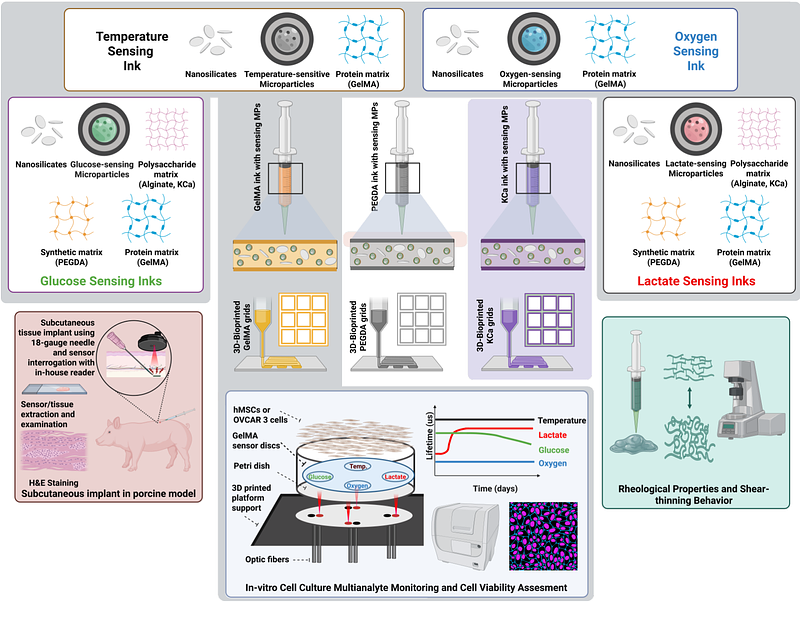IN4MER Bioink: A Phosphorescent Biosensing Bio-ink for Multiple Analytes (Glucose, Lactate, Oxygen) Measurements and Temperature Sensing Applications

IN4MER Bioink: A Phosphorescent Biosensing Bio-ink for Multiple Analytes (Glucose, Lactate, Oxygen) Measurements and Temperature Sensing Applications
Saleem, W.; Chimene, D.; White, B. P.; Deo, K. A.; Thomas, J. L.; Chidambara, N.; Mandrona, C.; Landsgaard, K.; Ko, B.; Kaunas, R.; Gaharwar, A. K.; McShane, M. J.
Abstract3D bioprinting has revolutionized tissue engineering by enabling researchers to create much more complex structures than was practical with earlier techniques. Bioprinting uses computer-controlled layer-by-layer deposition of a mixture of hydrogels and living cells and the resulting structures can mimic the complex geometries of many living tissues by incorporating multiple bioinks with varied material properties and cell populations, allowing researchers to design structures that vary not only in shape, but also in mechanical, chemical, and biological properties throughout the bioprinted construct. However, techniques for evaluating these living constructs and monitoring them over time have not yet caught up to these innovations. Here we describe a novel approach to reporting nutrient values in real-time throughout the scaffold itself, accomplished by dispersing oxygen, glucose, and lactate sensitive microspheres within bioinks. These can be noninvasively interrogated using low-cost phosphorescence lifetime readers to determine and track nutrient concentrations across our bioprinted constructs in real time. The wealth of information this technique produces suggests this may provide a powerful new tool for evaluating and designing future bioprinted constructs.